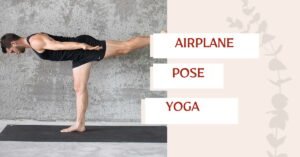Introduction
Constipation is a common digestive issue that many people experience at some point in their lives. It can lead to discomfort, bloating, and an overall feeling of sluggishness. While there are various remedies to alleviate constipation, yoga has emerged as a natural and effective method to support digestive health. In this post, we will explore how specific yoga poses can help relieve constipation and improve your overall well-being. 🧘♂️🧘♀️ #aatmyogashala #YogaPosesForConstipation
Yoga Poses for Constipation Relief
Here are ten effective yoga poses that can help alleviate constipation:
1. Wind-Relieving Pose (Pawanmuktasana)
This pose helps release gas from the digestive tract and stimulates the intestines. Lie on your back and hug your knees to your chest, gently rocking side to side.
2. Seated Forward Bend (Paschimottanasana)
This pose stretches the lower back and hamstrings while stimulating the liver, kidneys, ovaries, and uterus. Sit with your legs extended forward and reach towards your toes.
3. Cat-Cow Pose (Marjaryasana-Bitilasana)
Transitioning between Cat and Cow poses massages the abdominal organs, promoting better digestion. Begin on your hands and knees, then alternate between arching and rounding your back.
4. Garland Pose (Malasana)
A deep squat like Garland Pose stretches the lower back and opens the hips, aiding in digestion. Squat with your feet slightly apart, bringing your hands together in a prayer position.
5. Supine Twist (Supta Matsyendrasana)
Twisting poses help detoxify and massage the digestive organs. Lie on your back, draw one knee into your chest, and twist gently to the opposite side.
6. Child’s Pose (Balasana)
This resting pose calms the mind and gently compresses the abdominal organs. Kneel on the floor, sit back on your heels, and stretch your arms forward.
7. Downward-Facing Dog (Adho Mukha Svanasana)
This full-body stretch helps stimulate blood flow and digestion. Start on your hands and knees, then lift your hips towards the sky, forming an inverted V shape.
8. Bridge Pose (Setu Bandhasana)
The Bridge Pose helps stimulate the organs in the abdomen and improve digestion. Lie on your back with your knees bent, feet flat on the floor, and lift your hips towards the ceiling.
9. Standing Forward Bend (Uttanasana)
This pose aids in digestion by compressing the abdominal organs. Stand with your feet hip-width apart, and fold forward from your hips, reaching toward the ground.
10. Legs Up the Wall Pose (Viparita Karani)
This restorative pose helps relax the digestive system and reduce stress. Sit next to a wall, swing your legs up, and recline onto your back with your arms at your sides.
Incorporating these yoga poses into your regular routine can help improve digestive health and relieve constipation naturally.
Understanding Constipation
To address constipation effectively, it’s essential to understand what it is and what causes it. Constipation is typically defined as having fewer than three bowel movements per week. Common causes include:
- Poor diet low in fiber
- Dehydration
- Lack of physical activity
- Stress and anxiety
- Certain medications
Making dietary and lifestyle changes, such as increasing fiber intake, drinking more water, and staying active, can significantly reduce the chances of experiencing constipation.
Also Read:Elephant Pose Yoga & There Benifits
Also Read:Best 200 Hours Yoga TTC in Rishikesh
Role of Yoga in Digestive Health
Yoga is well-known for its numerous health benefits, including its positive impact on digestive health. Practicing yoga can help stimulate the digestive system, promote regular bowel movements, and reduce stress, which is often a contributing factor to constipation. By incorporating specific yoga poses into your routine, you can support your digestive health and experience relief from constipation.
Yoga Poses for Alleviating Constipation
Here are some yoga poses that can help alleviate constipation and promote better digestion:
Pavanmuktasana (Wind-Relieving Pose)
Description: Lie on your back with your legs extended. Bring your right knee toward your chest and hold it with both hands. Press your thigh into your abdomen. Hold for 10-20 seconds, then switch to the left leg.
Benefits: This pose helps release gas and stimulates the ascending, descending, and transverse colon.
Malasana (Garland Pose)
Description: Stand with your feet slightly wider than hip-width apart. Squat down, bringing your hips as close to the floor as possible. Keep your feet flat on the ground and press your elbows against your inner knees.
Benefits: This pose helps open up the pelvis, lengthens the spine, and stimulates the digestive tract.
Ardha Matsyendrasana (Half Lord of the Fishes Pose)
Description: Sit with your legs extended. Bend your right knee and place your right foot on the outside of your left thigh. Twist your torso to the right, placing your left elbow on the outside of your right knee.
Benefits: This twisting pose massages the abdominal organs and promotes detoxification.
Balasana (Child’s Pose)
Description: Kneel on the floor with your big toes touching and knees spread apart. Sit back on your heels and extend your arms forward, resting your forehead on the mat.
Benefits: This gentle pose relaxes the body, reduces stress, and gently compresses the abdomen to stimulate digestion.
Supta Matsyendrasana (Supine Twist)
Description: Lie on your back with your arms extended to the sides. Bend your right knee and cross it over your left side while keeping your shoulders flat on the ground. Hold for 10-20 seconds, then switch sides.
Benefits: This pose helps massage the internal organs and improves overall digestion.
Incorporating Yoga into Your Routine
If you’re new to yoga, here are some tips to help you get started:
- Start Slow: Begin with a few poses and gradually increase the number and duration of your sessions.
- Consistency is Key: Aim to practice yoga for at least 15-20 minutes daily to see significant improvements.
- Listen to Your Body: Avoid pushing yourself too hard and modify poses as needed.
Dietary and Lifestyle Advice
To enhance the effects of yoga, consider making these complementary dietary and lifestyle changes:
- Stay Hydrated: Drink plenty of water throughout the day.
- Increase Fiber Intake: Incorporate more fruits, vegetables, and whole grains into your diet.
- Stay Active: Regular physical activity can help keep your digestive system functioning smoothly.
- Manage Stress: Practice mindfulness and relaxation techniques to reduce stress levels.
Conclusion
Yoga is a powerful tool in managing constipation and promoting overall digestive health. By incorporating specific yoga poses into your routine and making mindful dietary and lifestyle changes, you can experience lasting relief from constipation. Not only does yoga help in alleviating physical discomfort, but it also plays a critical role in reducing stress and enhancing overall well-being. Remember to approach your practice with patience and consistency, and pay attention to your body’s signals. Ready to begin your yoga journey? Share your experiences and connect with our community of health-conscious individuals today.
FAQs
How often should I practice yoga to relieve constipation?
For best results, aim to practice yoga for at least 15–20 minutes daily. Consistency is key to experiencing improvements in your digestive health and relieving constipation.
Can beginners practice these yoga poses?
Yes, the yoga poses suggested in this guide are suitable for beginners. Start slow, listen to your body, and modify the poses if necessary to make them comfortable for you.
How long will it take to see results from practicing yoga?
The time it takes to see results can vary from person to person. With regular practice and consistency, you may start experiencing relief from constipation within a few days to a few weeks.
Are there any precautions to take while performing these yoga poses?
While performing these poses, ensure you move slowly and mindfully. Avoid pushing yourself into any pose that causes discomfort or pain. If you have any medical conditions or concerns, consult with your healthcare provider before starting a new yoga routine.
Can yoga replace other treatments for constipation?
Yoga can be an effective complementary approach to relieving constipation. However, it is essential to maintain a balanced diet, stay hydrated, and engage in regular physical activity. If constipation persists despite these measures, it’s crucial to seek advice from a healthcare professional.




